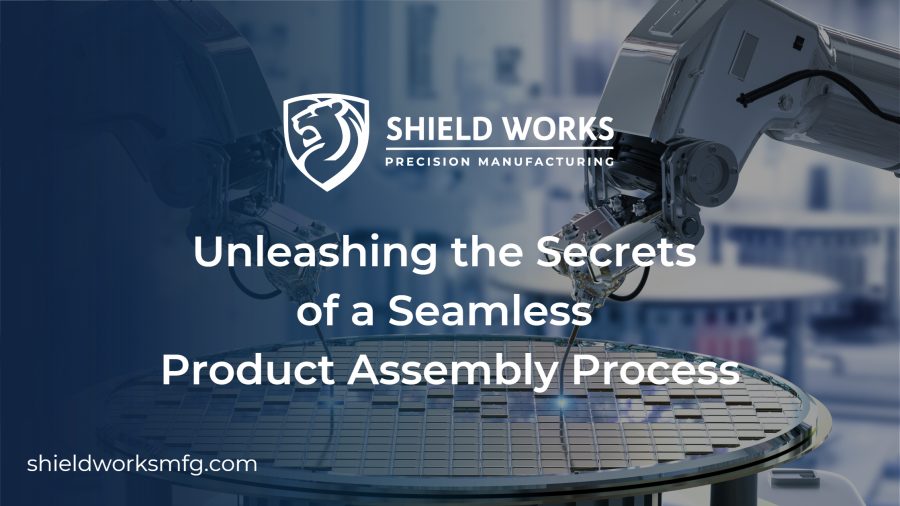Unleashing the Secrets of a Seamless Product Assembly Process

Product assembly is an essential part of the manufacturing process and is critical to the success of any product. Whether you are a small start-up or a large corporation, a seamless product assembly process can greatly impact your bottom line and help you stay ahead of the competition.
In this article, we will explore the secrets of a seamless product assembly process and provide you with the tools and knowledge you need to streamline your product assembly process for maximum efficiency, cost savings, and quality.
Understanding the Stages of the Product Assembly Process
The product assembly process typically consists of several stages, each of which plays a critical role in ensuring a high-quality final product. These stages can include:
Design & Prototyping
The first stage of the product assembly process is the design and prototyping stage. During this stage, the product is designed and a working prototype is created. This stage is critical because it allows you to test the product and make any necessary changes before it goes into full production.
Raw Materials Procurement
The next stage is the procurement of raw materials. This stage involves sourcing the materials that will be used to create the final product. It is important to choose the right materials to ensure that the product is durable, reliable, and meets the required specifications.
Parts Fabrication
Once the raw materials have been procured, the next stage is the fabrication of the parts. This stage involves cutting, shaping, and forming the materials into the necessary parts for the product.
Component Assembly
The component assembly stage involves putting the parts together to create the subassemblies that make up the final product. This stage requires precision and attention to detail to ensure that the subassemblies fit together correctly and are functional.
Final Assembly
The final stage of the product assembly process is the final assembly stage. During this stage, the subassemblies are put together to create the final product. This stage is critical because it is the final opportunity to make any necessary adjustments or improvements to the product before it is packaged and shipped to customers.
Streamlining the Product Assembly Process
To streamline the product assembly process, there are several key principles that you can follow. These include:
Automation
Automating certain parts of the product assembly process can greatly improve efficiency and reduce the risk of errors. Automated systems can be programmed to perform specific tasks, such as placing components in the correct position, checking for proper alignment, and monitoring the quality of the product.
Standardization
Standardizing the product assembly process can help to ensure consistency and improve efficiency. This can be achieved by using standardized procedures, tools, and equipment to ensure that each step of the process is performed the same way every time.
Continuous Improvement
Continuous improvement is key to a seamless product assembly process. By constantly evaluating the process and making improvements, you can reduce waste, increase efficiency, and improve the quality of the final product.
Lean Manufacturing
Lean manufacturing is a philosophy that emphasizes the elimination of waste and the optimization of resources. By incorporating lean principles into the product assembly process, you can reduce waste, improve efficiency, and increase profitability.
Tools & Technologies for a Seamless Product Assembly Process
There are several tools and technologies that can help you streamline the product assembly process and improve the quality of the final product. These include:
Computer-Aided Design (CAD) Software
CAD software can be used to design the product and create a virtual prototype. This allows you to make changes and test the product before it goes into full production.
3D printing
3D printing can be used to create prototypes and even final products in some cases. This technology has revolutionized product assembly by allowing manufacturers to quickly and easily create prototypes, test and refine designs, and even create final products with greater precision and accuracy.
Automated Inspection Systems
Automated inspection systems can be used to check the quality of products during the assembly process. These systems use cameras and sensors to inspect the product and identify any defects or deviations from the specified requirements. This helps to ensure that the final product meets the required standards and reduces the risk of product defects.
Industrial Robots
Industrial robots can be used to automate certain tasks in the product assembly process. These robots can be programmed to perform tasks such as placing components in the correct position, checking for proper alignment, and monitoring the quality of the product. By using robots in the product assembly process, you can reduce the risk of errors and improve efficiency.
Integrated Software Systems
Integrated software systems can be used to manage the product assembly process from start to finish. These systems can be used to track the progress of each step of the process, monitor production schedules, and control inventory levels. By using integrated software systems, you can improve the visibility of the product assembly process and ensure that everything runs smoothly.
A seamless product assembly process is critical to the success of any product. By understanding the stages of the process, following key principles such as automation, standardization, and continuous improvement, and utilizing tools and technologies such as CAD software, 3D printing, automated inspection systems, industrial robots, and integrated software systems, you can streamline your product assembly process and improve the quality of the final product. With these secrets, you can unlock the potential for greater efficiency, cost savings, and customer satisfaction.
Shield Works is a assembly facility with 18 years of experience and IP-protected production units. We can save you the hassles of assembling your product all the way from the get-go. Contact us today!
